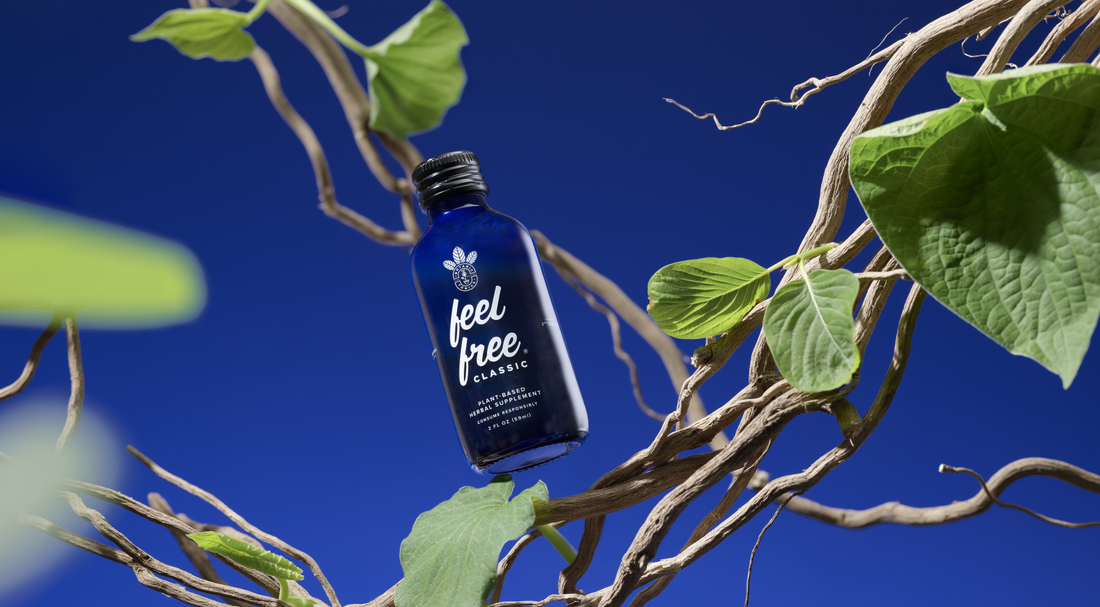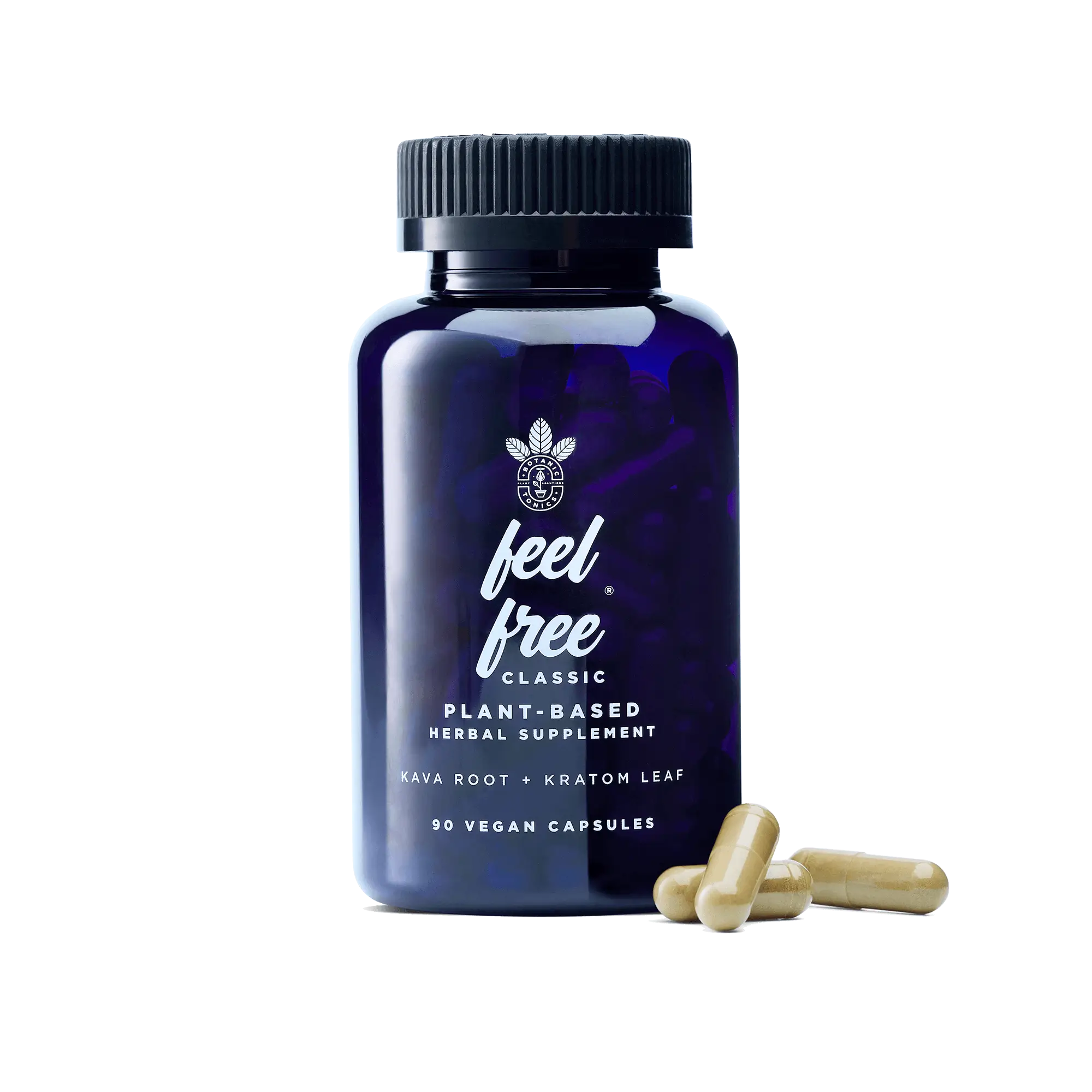Best Ways to Take Kratom
If you’ve been on the hunt for fresh, holistic approaches to well-being, chances are, leaf kratom has risen to your attention.
For a solid reason: Roughly 10 to 16 million US residents turn to the plant-based supplement to augment their wellness aims, while a recent survey performed by Johns Hopkins Medicine demonstrates kratom’s possible therapeutic benefits.[1,2] Between its potential to boost stamina and brighten a blue mood, it’s clear why the herbal remedy has skyrocketed to a billion-dollar industry.3
Intrigued? Here’s the best way to take kratom for a positive—and safe—effect.
What is Kratom, Exactly? An Introduction

Kratom may have started garnering attention in the United States in the early to mid-aughts. Still, it’s been used throughout Southeast Asia for a variety of therapeutic, recreational, and ceremonial purposes since the 1800s.[4] Traditionally, it was called upon in places such as Thailand, Indonesia, and Malaysia to:[5,6]
- Bolster work productivity
- Increase calm and relaxation
- Improve alertness
- Promote sociability
Contemporary connoisseurs of kratom consume the herbal supplement for the same potential perks.
How Does Kratom Work?
Known throughout Southeast Asia as ketum, kakuam, thom, and Biak, kratom is derived from the leaves of Mitragyna speciosa. The tropical tree and native of the coffee family produces 40-plus unique alkaloids—or naturally occurring, bioactive phytocompounds.[8,9]
The two most prodigious (and well-studied) alkaloids found in kratom boil down to:[10]
- Mitragynine
- 7-hydroxymitragynine
These chemicals bind to the brain’s “mu” (or opioid) receptors and impact the central nervous system (CNS).[8] (It’s important to note here, however, that kratom is not an opioid, nor is it classified as a controlled substance by the Drug Enforcement Administration.)[11] In turn, kratom may promote:
- Focus
- Energy
- Relaxation
All that said, the way you consume leaf kratom plays a vital role in its effects.
See related: Is Kratom Legal?
Different Methods of Taking Kratom
Perhaps you’ve eyed leaf kratom on the shelf at your local head shop. Quite possibly, it’s caught your attention online or at a gas station. Regardless of where you’ve seen it, you’ve likely noticed that it’s offered in a number of rather interesting forms for consumption, including kratom tea bags, capsules, and extracts.
In Southeast Asia, kratom leaf has historically been chewed (either dried or fresh) or brewed in tea. Now, the best way to take kratom comes down to a few types.
Capsule, Powders, and Tonics
You might not spot a kratom latte at your local coffee store, but you may see a kratom libation on the menu at your city’s kava bar.[12] And yet, you don’t need to leave the comfort of your home to enjoy leaf kratom: it’s also available for oral consumption in:
- Capsules
- Powders
- Tonics
The beauty of these leaf kratom forms is that they give you the freedom to concoct your own recipes.
You might choose to toss a scoop into a homemade smoothie or milkshake or have a few capsules during your morning routine. Alternatively, you could try leaf kratom and coffee together. Experiment (safely and in moderation) with different combinations according to your palate: Some say that kratom has a distinctly bitter taste to them. Start with a small serving of kratom products to see if the effects are to your liking.
Leaf Kratom Tea
Modern consumption of kratom tea honors its Southeast Asian roots and enables you to adjust your brew to your taste. The process is also simple enough (and could be considered a meditative act of self-care), and you’re at liberty to use leaf kratom powder, loose leaves, or a tea bag:[13]
- Boil water
- Steep kratom tea bag for 10 to 15 minutes
- Strain leaves with a cheesecloth or tea strainer (if you’re using loose leaves)
Many choose to sweeten their kratom tea with honey, sugar, or agave, while a twist of lemon may balance its bite. Discover more tips on how to make kratom tea in our guide.
Capsules or Tablets
For the ultimate in discretion and convenience, opt for leaf kratom in a capsule or tablet form. Frequently deemed the most popular way to consume the plant-based solution, these supplements are typically derived from leaf kratom powders and are optimal for those who are especially turned off by kratom’s sharp flavor. Kratom capsules are good for those looking to add a quick supplement to their routine or avoid the flavor of kratom altogether.
What Factors Impact the Plant’s Effects?
Experts indicate that leaf kratom’s effects hinge on how it’s consumed—drinking it, for one, is thought to have a powerful influence on the central nervous system (but more research on kratom is needed to understand its full effects). Several other factors to consider include:[14]
Serving Size
Smaller servings of kratom are believed to nourish its enlivening effects, like feeling more at ease and talkative in social settings and better able to zero in on a work assignment.[6] On the other hand, larger servings are thought to organically encourage the plant’s more soothing impact.
However, keeping an eye on the serving size of your leaf kratom product—as well as how much you consume of it—is imperative and should not exceed 5 grams per serving (and taken less than three times per day).[15] This may help you stave off potential side effects of excessive kratom consumption, such as:[16]
- Sweating
- Itching
- Nausea
- Dizziness
- Constipation
Learn more in our leaf kratom serving guide.
Type of Kratom Strain
The type of leaf kratom strains you elect to consume also has a hand in how you may experience it—and by strain, we mean not only the part of the leaf used in the product but also its place of origin and how (and even when) it was harvested.[17,18,19]
38 strains of kratom have been identified, but they’re usually classified as red, green, or white. (A less common strain is yellow.) This is why you may see products like “Bali/Red Vein,” “White Vein Thai,” and “Green Malay.”
While research on the specific effects of each strain is still in its infancy, anecdotally it’s believed that:
- Red leaf kratom is the most potent
- White leaf kratom is the most balanced
- Green leaf kratom is the most moderate
Whatever strain you choose, or your method of consumption, triple-check to guarantee that it’s derived from the leaf of Mitragyna speciosa where the lowest amounts of the plant’s active compounds are found. This, too, may help you ward off unpleasant side effects—and relish only its potential rewards.
Individual Factors
The best way to take kratom is somewhat subjective—indeed, some prefer to chew kratom gum—but the fullness of its effects is less so. Meaning, your individual attributes figure mightily into its impact, such as your:[20]
- Body weight
- Age
- Genetics
- Metabolism
- Existence of underlying medical conditions
- Liver health
Kratom Quality
Not all kratom is considered equal: Because it’s characterized as a dietary supplement by the Food and Drug Administration (FDA), leaf kratom falls into the gray area of regulation where only its marketing and medical claims come under scrutiny—and it’s up to the brand to ensure the product is unadulterated.[21]
This paves the way for plenty of questionable and even downright dangerous kratom products on the market, including products that contain harmful ingredients like heavy metals and harmful bacteria.[6] Equally concerning is the fact that some less-than-upstanding kratom manufacturers sell products with unclear—and unstable—amounts of the plant’s phytochemicals. And who would want to mess with that level of unpredictability?
To that end, search for a brand that:
- Has a solid reputation with ample, positive reviews
- Manufactures their products in an FDA-regulated facility
- Undergoes certified lab testing to ensure consistency in its active ingredients
- Guarantees contaminant safety
Additionally, steer clear of kratom brands that make blatant (and too-good-to-be-true) medical claims. This is often a red flag that they may not have your best interests and wellness in mind.
Try Leaf Kratom with feel free

feel free not only has your best interests in mind: We’re passionately invested in it. We’d also second that the best way to consume kratom depends on a host of factors, from your palate to your personal preferences.
This gave way to our feel free CLASSIC tonic and capsules, hyper-high-quality life enhancers that capitalize on plants’ natural powers.
Our expertly sourced, rigorously tested products feature kava root, leaf kratom, and other ancient plants that demonstrate Mother Earth’s magic. When these magnificent ingredients work in harmony, they may offer the concentration boost and sense of peace you’ve been hoping to discover.
Taste and feel exceptionalism with Botanic Tonics.
Sources:
- Frontiers in Pharmacology. Understanding kratom use: a guide for healthcare providers. https://www.frontiersin.org/journals/pharmacology/articles/10.3389/fphar.2022.801855/full
- Johns Hopkins Medicine. Natural herb kratom may have therapeutic effects and relatively low potential for abuse or harm, according to a user survey. https://www.hopkinsmedicine.org/news/newsroom/news-releases/2020/02/natural-herb-kratom-may-have-therapeutic-effects-and-relatively-low-potential-for-abuse-or-harm-according-to-a-user-survey
- NPR. Florida’s unregulated kratom market. https://www.npr.org/2024/01/31/1198909933/1a-draft-01-31-2024
- Frontiers in Pharmacology. Kratom use in the US: both a regional phenomenon and a white middle-class phenomenon? Evidence from NSDUH 2019 and an online convenience sample. https://www.ncbi.nlm.nih.gov/pmc/articles/PMC8721145/
- Substance Abuse Rehabilitation. Current perspectives on kratom use. https://www.ncbi.nlm.nih.gov/pmc/articles/PMC6612999/
- National Institutes on Drug Abuse. Kratom. https://nida.nih.gov/research-topics/kratom#kratom
- Mayo Clinic. Kratom: unsafe and ineffective. https://www.mayoclinic.org/healthy-lifestyle/consumer-health/in-depth/kratom/art-20402171
- ScienceDirect. Exploring the use of kratom in (Mitragyna speciosa) via the YouTube data tool: a novel netnographic analysis. https://www.sciencedirect.com/science/article/pii/S2667118221000052
- Science Direct. Alkaloid. https://www.sciencedirect.com/topics/pharmacology-toxicology-and-pharmaceutical-science/alkaloid
- Harvard Health Publishing. Kratom: fear-worthy foliage or beneficial botanical? https://www.health.harvard.edu/blog/kratom-fear-worthy-foliage-or-beneficial-botanical-2019080717466
- DEA.gov. Drug fact sheet: kratom. https://www.dea.gov/sites/default/files/2020-06/Kratom-2020_0.pdf
- Bloomberg. New, non-alcoholic bars offer an addictive alternative. https://www.bloomberg.com/news/newsletters/2023-10-23/kratom-a-dea-drug-of-concern-is-driving-growth-at-kava-bars?embedded-checkout=true
- VeryWell Health. Kratom tea: how to sip responsibly. https://www.verywellhealth.com/kratom-tea-8383922
- Forbes. What is kratom? Uses, side effects and more. https://www.forbes.com/health/supplements/kratom/
- Healthline. What’s the verdict on kratom and alcohol https://www.healthline.com/health/kratom-and-alcohol#effects
- WebMD. What is kratom? https://www.webmd.com/mental-health/addiction/kratom-facts
- Seattle Met. Types of kratom: guide to kratom strains.
- Healthline. Can you use kratom for depression and anxiety https://www.healthline.com/health/depression/kratom-for-depression#types
- International Journal of Environmental Research and Public Health. Examining the psychoactive differences between kratom strains. https://www.ncbi.nlm.nih.gov/pmc/articles/PMC10379209/
- American Addiction Centers. How long does kratom stay in your system https://americanaddictioncenters.org/kratom/how-long-last
- US Food and Drug Administration. Questions and answers on dietary supplements. https://www.fda.gov/food/information-consumers-using-dietary-supplements/questions-and-answers-dietary-supplements#
















